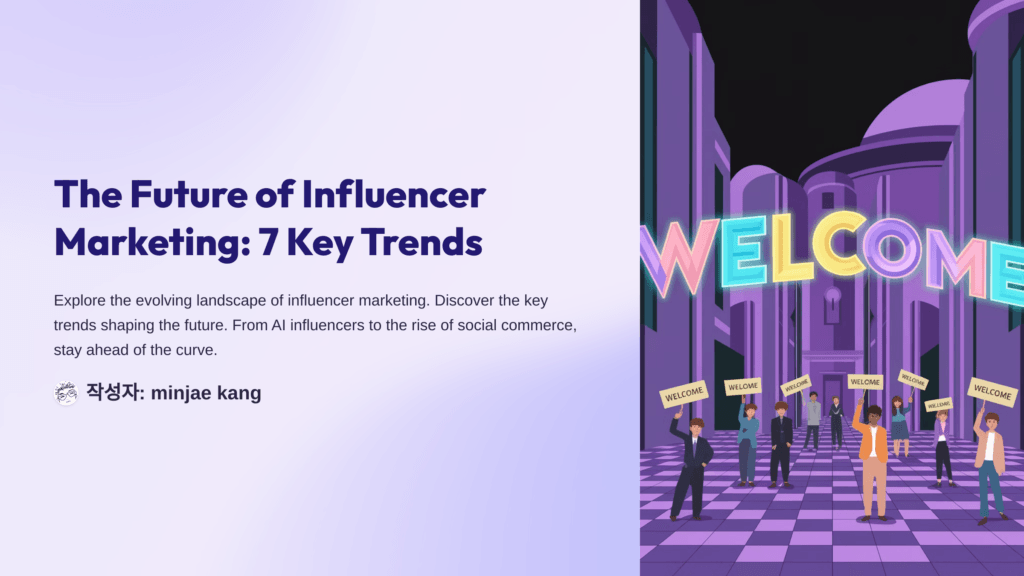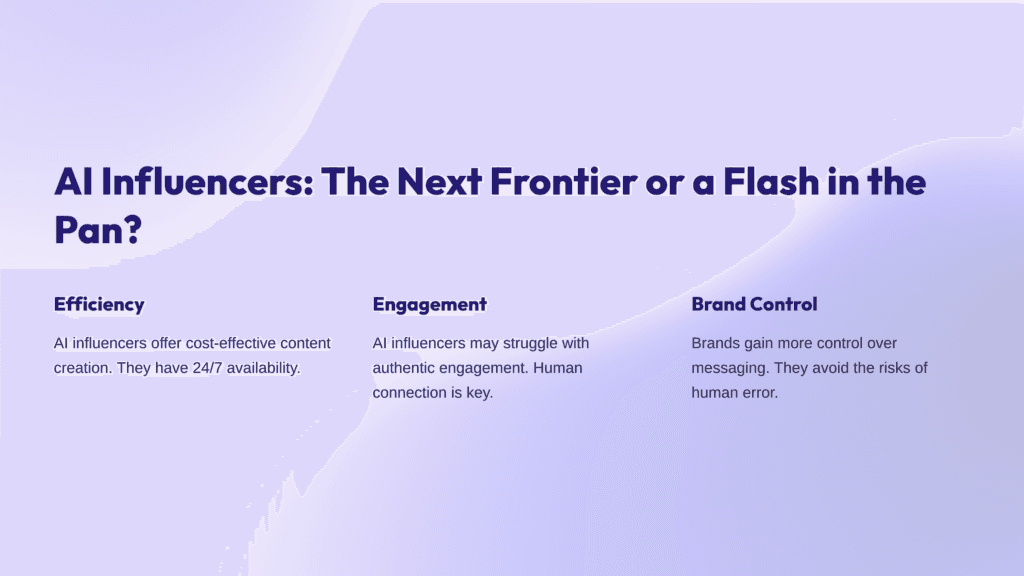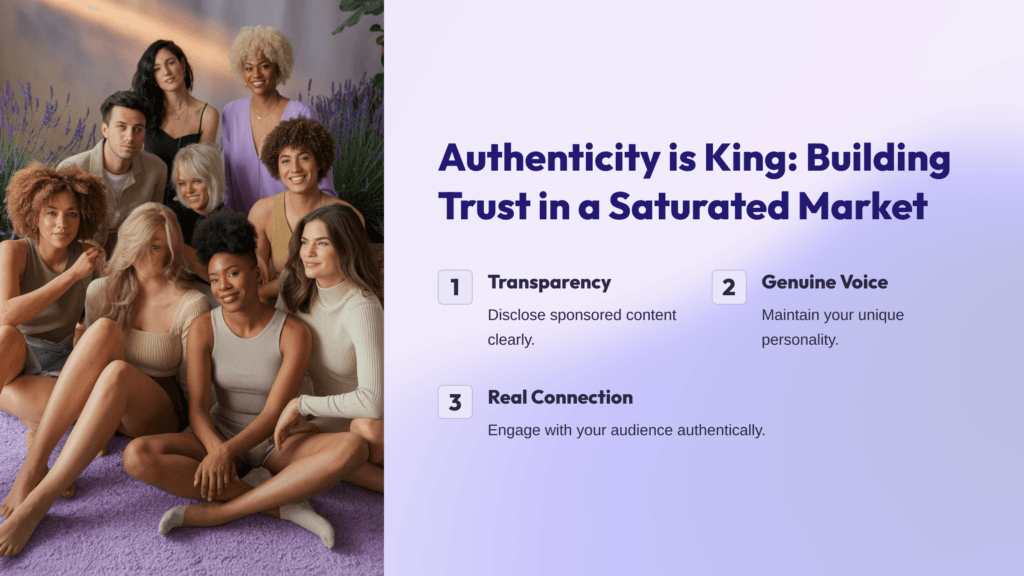
In the ever-evolving digital landscape, The Future of Influencer Marketing in 2025 is poised for a major transformation. As brands and creators navigate new technologies, shifting consumer behaviors, and regulatory changes, influencer marketing is set to become more strategic, data-driven, and immersive. The rise of AI, the increasing importance of authenticity, and the evolution of platforms are some key factors that will shape the industry in the coming years.
With social media platforms constantly introducing new features and engagement models, influencers and marketers must adapt to maintain relevance. The relationship between brands and influencers is also changing, with long-term partnerships and micro-influencers gaining traction. Additionally, ethical considerations and transparency are becoming more critical, as audiences demand honesty and value from the influencers they follow.
In this article, we will explore seven key trends shaping influencer marketing in 2025, including advancements in technology, shifts in audience expectations, and the role of emerging platforms. We will also discuss the pros and cons of each trend, real-world examples, and expert insights to provide a comprehensive understanding of where the industry is headed.
1. AI and Automation Will Dominate Influencer Marketing

Artificial Intelligence (AI) is revolutionizing influencer marketing, making processes more efficient and data-driven. AI-powered tools help brands identify the most suitable influencers based on audience demographics, engagement rates, and content style. Automated platforms also streamline campaign management, from content approval to performance tracking.
💡 Pros:
- Saves time and reduces manual workload
- Enhances targeting accuracy
- Provides real-time data and predictive analytics
⚠️ Cons:
- Lacks human intuition and emotional intelligence
- Can lead to inauthentic partnerships
- Privacy concerns related to data collection
🎯 Example: AI-driven platforms like Upfluence and Heepsy are being used to match brands with the most relevant influencers based on advanced analytics.
🔗 Learn More: AI and influencer marketing
2. The Rise of Virtual and AI-Generated Influencers

With AI capabilities advancing rapidly, virtual influencers—computer-generated digital personas—are gaining popularity. These AI influencers can engage audiences, promote products, and even collaborate with human creators. Brands are increasingly using them for controlled and curated marketing campaigns.
💡 Pros:
- Full control over brand messaging
- No risk of influencer scandals
- 24/7 availability and scalability
⚠️ Cons:
- May lack emotional connection with audiences
- Ethical concerns about transparency
- Can be costly to develop
🎯 Example: Virtual influencers like Lil Miquela and FN Meka have amassed millions of followers, proving the effectiveness of AI-driven personalities.
🔗 Learn More: Virtual influencers in marketing
3. Authenticity and Transparency Will Be More Important Than Ever

Consumers are becoming more skeptical of paid promotions, leading to a demand for greater authenticity. Audiences value influencers who genuinely believe in the products they endorse, rather than those who simply promote for monetary gain. Transparency in sponsorships and ethical marketing practices will be essential.
💡 Pros:
- Builds trust with audiences
- Enhances brand credibility
- Leads to higher engagement rates
⚠️ Cons:
- Stricter regulations on sponsorship disclosure
- Harder for brands to control messaging
- May limit influencer partnerships
🎯 Example: Instagram now requires influencers to label paid partnerships, ensuring transparency in sponsored content.
🔗 Learn More: FTC guidelines on influencer marketing
4. Short-Form Video Content Will Dominate

Platforms like TikTok, Instagram Reels, and YouTube Shorts are shaping how audiences consume content. The demand for engaging, bite-sized videos will continue to grow, making short-form video marketing an essential strategy for brands and influencers.
💡 Pros:
- Higher engagement rates
- Easy to consume and share
- Works well with trends and challenges
⚠️ Cons:
- Requires frequent content creation
- Shorter lifespan than long-form content
- Can be challenging to deliver complex messages
🎯 Example: Brands like Chipotle and Nike have successfully leveraged TikTok influencers to drive viral marketing campaigns.
🔗 Learn More: Short-form video marketing
5. The Shift Toward Niche Micro-Influencers

Rather than investing in mega-influencers with millions of followers, brands are shifting toward niche micro-influencers (10,000–100,000 followers) who have highly engaged audiences. These influencers often have stronger relationships with their followers, leading to more impactful promotions.
💡 Pros:
- Higher engagement and conversion rates
- More cost-effective than celebrity influencers
- Better audience targeting
⚠️ Cons:
- Requires working with multiple influencers
- Limited reach compared to macro-influencers
- Time-consuming to manage collaborations
🎯 Example: Beauty brands like Glossier frequently collaborate with micro-influencers to maintain an authentic brand image.
🔗 Learn More: The power of micro-influencers
6. Social Commerce Will Revolutionize Influencer Marketing

Social media platforms are evolving into shopping destinations, allowing users to purchase products directly from influencers’ posts. With the rise of Instagram Shops, TikTok Shop, and Pinterest Shopping, social commerce is becoming a major revenue driver.
💡 Pros:
- Simplifies the purchase process
- Increases impulse buying
- Enhances brand-influencer collaborations
⚠️ Cons:
- Can lead to over-commercialization of content
- Increased competition among influencers
- Platform-dependent revenue
🎯 Example: TikTok Shop has enabled influencers to generate direct sales by integrating product links within their videos.
🔗 Learn More: Social commerce trends
7. Long-Term Partnerships Will Replace One-Off Collaborations

Brands are moving away from one-time sponsorships and focusing on long-term influencer collaborations. This approach builds stronger brand affinity and ensures more authentic promotion over time.
💡 Pros:
- Strengthens brand-influencer relationships
- Increases audience trust
- More consistent brand messaging
⚠️ Cons:
- Requires higher budget commitments
- Influencer’s reputation can impact the brand
- Harder to test multiple influencer strategies
🎯 Example: Companies like Gymshark have built long-term relationships with fitness influencers, leading to sustained brand growth.
🔗 Learn More: Building influencer partnerships
Conclusion
The Future of Influencer Marketing in 2025 is set to be driven by AI, authenticity, and evolving consumer behaviors. From virtual influencers to social commerce, these trends will shape how brands collaborate with content creators. Adapting to these changes will be crucial for staying ahead in the competitive digital landscape.
